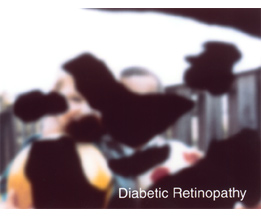Having type 1 or type 2 diabetes may put you at risk for common diabetes-related eye problems, including cataracts, glaucoma, macular edema, and diabetic retinopathy (damage to blood vessels that lead to the retina), which may lead to retinal detachment.

Figure 18 - diabetic-retinopathy-lg.jpg
What Causes Diabetic Retinopathy?
In most cases, diabetes affects the eyes because high blood sugar and hypertension can damage the tiny blood vessels that lead to your retina, causing them to be weakened or narrowed. This may lead to a number of complications, from blood getting into the vitreous (or gel-like area) of the eye, to the retina becoming detached.
Symptoms of Diabetic Retinopathy
At first, you may not experience any symptoms – the type of damage that is most commonly associated with diabetes happens gradually, and may not necessarily be noticed. Eventually, you may experience symptoms that vary depending on the eye issue you have, including:
-
Eye flashes and floaters
-
Blurred vision
-
Dark spots
-
Loss of vision.
These symptoms are difficult to detect so be sure to have your eyes checked regularly if you have diabetes.
Treatment for Diabetes-Related Eye Problems
Preventive measures are the best ways to avoid eye problems associated with diabetes.
Here are a few steps to follow:
Keep your blood glucose and blood pressure as normal as possible: high blood sugar and hypertension are high risk factors for damage to the tiny blood vessels in the eye, which is the starting point for more serious complications. Making sure your blood glucose and blood pressure are where they need to be can help you stop problems before they start.